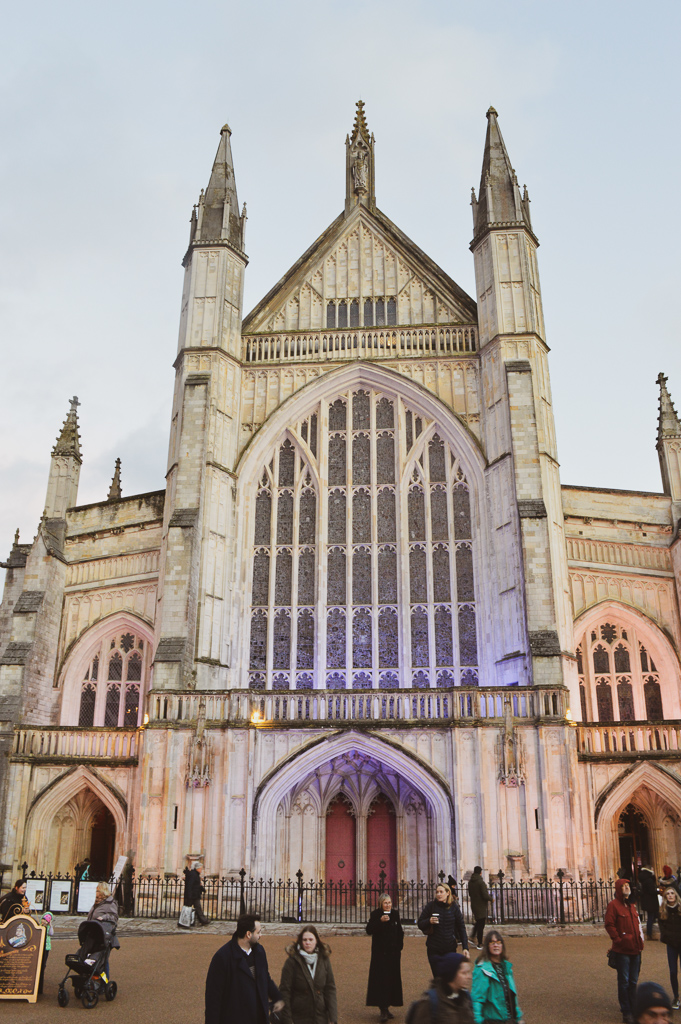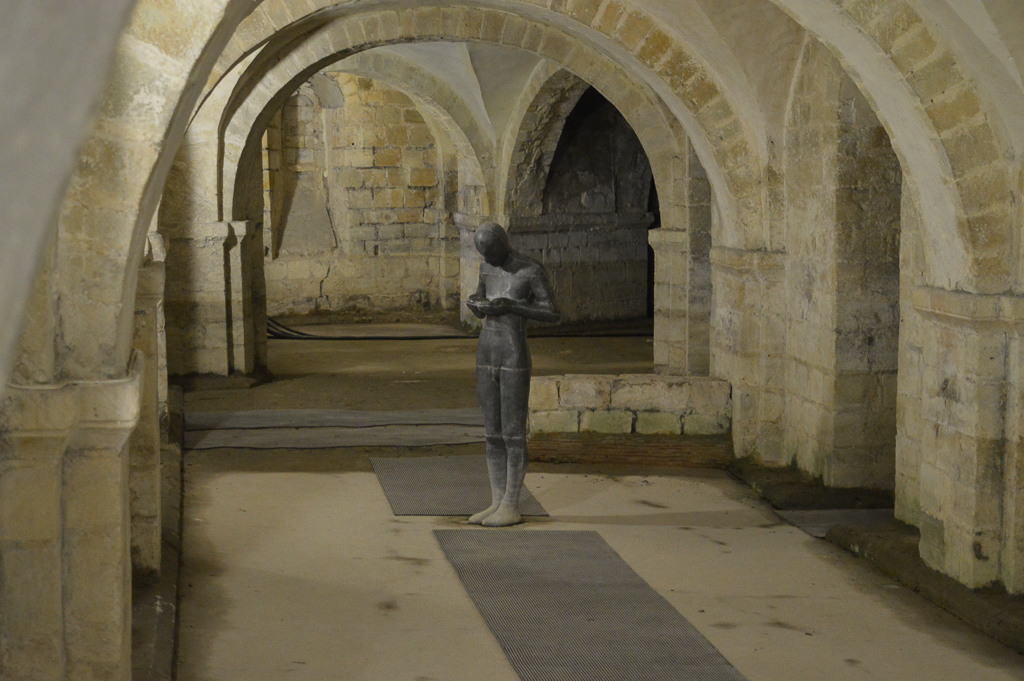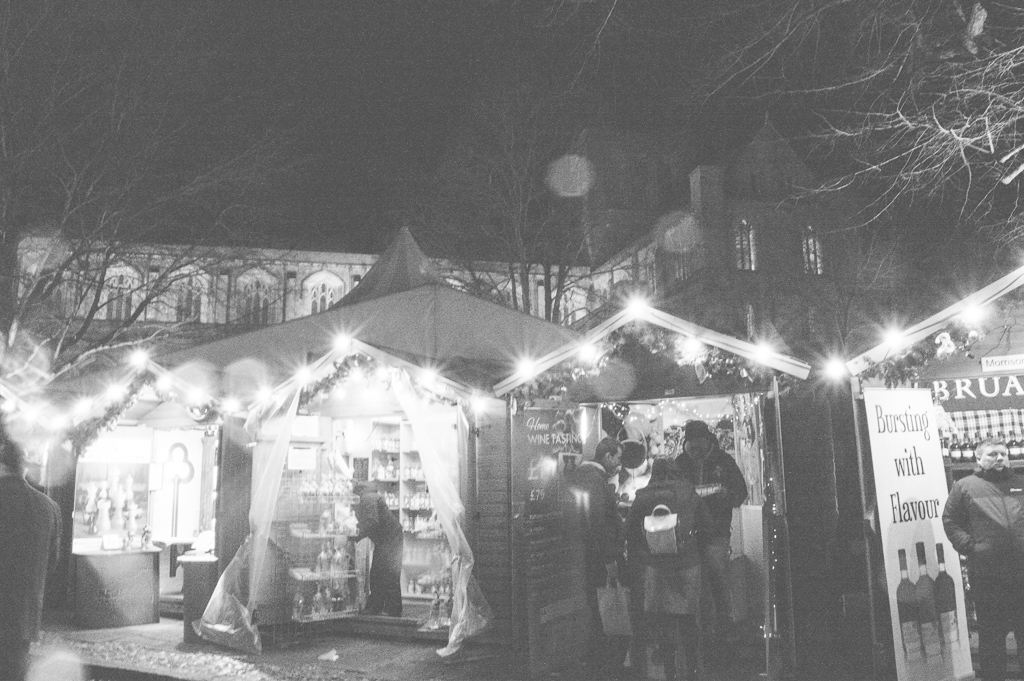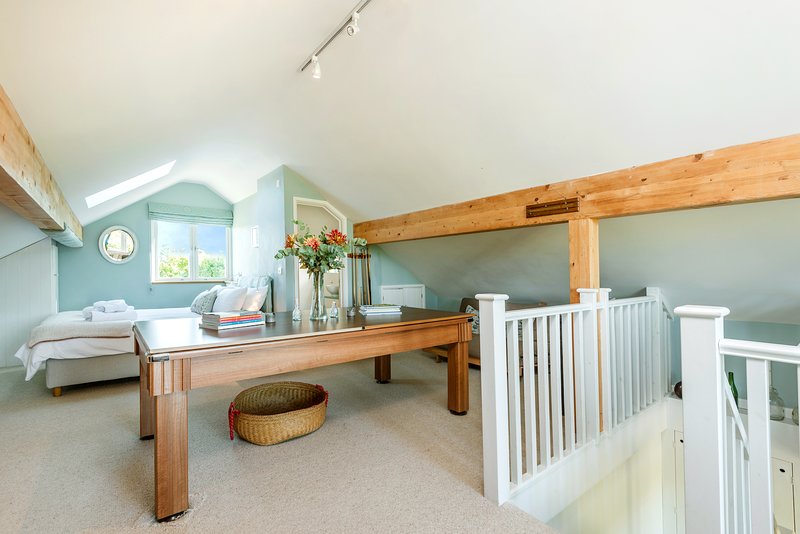Last year Tom and I spent our first wedding anniversary at Winchester – a surprise his good self organised.

If you’ve read our wedding post (or just attended!) you may remember that when we got married we had a beautiful winter’s day, but the day after we had a foot of snow and many of our guests ended up with an extended stay in the Cotswolds. And as a result of the weather, our mini-moon to Hamburg’s festive markets was cancelled. (Don’t feel too bad, we did get away eventually…)

Our wedding date was partially picked simply because I fucking love Christmas. And our anniversary I hope will be forever dominated by the festive spirit and Christmas markets. And we got off to a great start with Winchester.
Where we stayed – The Hayloft at Crabwood Cottages
We stayed just outside of Winchester at the Hayloft, Crabwood Cottages in Sparsholt which is just two miles from Winchester city centre and is ideal for two people. A converted hayloft, it has a view with a veranda overlooking the surrounding farmland.
Downstairs features a small living area with kitchen, but really upstairs was breathtaking, opening up into a large open plan bedroom. There was even enough space to do a few yoga moves in the morning. The owners kindly provided breakfast – local bacon, eggs, homemade granola and homemade jam for toast. It was a tad difficult to find, down a dirt track, past farm buildings, but that just added to the charm.
We were here for two nights, to give us a chance to spend the full day exploring Winchester. On the first night, Tom had brought dinner with us to simply pop in the oven, they had everything we needed in the fully equipped kitchen.
What we did: Winchester’s Great Hall
Winchester has a long history, it was first settled by Romans and known as Venta Belgarum. Once the last Roman soldier left and some decades later the Saxons moved in, it was referred to as Venta Caestar, then Wintancaester – the early origins of today’s Winchester.

The city’s most famous son is Alfred the Great, who became ruler of the West Saxon’s after he and his brother defeated the Danish Vikings at the Battle of Ashdown and by 871AD, at just 21, Alfred was crowned King of Wessex, establishing Winchester as his capital. And had the most influence on the city’s structure, laying it out in a grid pattern and fortifying its boundaries.
By 1066, King Harold’s widow, surrendered Winchester to invading Normans and William the Conqueror rebuilt the city’s Saxon royal palace and began construction of the Cathedral we see today. Winchester remained important for hundreds of years witnessing royal marriages, births, deaths and coronations.


We had the full day in Winchester and as wonderful as the Christmas market was, it wasn’t going to keep up occupied for the full day. So we started with a walk around Winchester’s Great Hall.

The Great Hall was part of Winchester Castle, an enormous fortification began by William the Conqueror in 1067 and added to by Henry III between 1222 and 1236. The hall is also home to one of the greatest symbols of medieval mythology, King Arthur’s Round Table and ultimately the hall is all that remains of the castle. For an adult, it’s £3 to have a wander around and leads onto Queen Eleanor’s Garden.

Winchester Cathedral: history you need to know

Winchester Cathedral has more than 1000 years of history and is Europe’s longest medieval cathedral. It has its roots in the 7th century when England’s pagan monarchy first became Christians. Cynegils, King of the West Saxons in 635, was first baptised and his son, Cenwalh built the first church in Winchester which became known as Old Minster.

Old Minister morphed into a cathedral under a bishop whose diocese spread from the English Channel to the Thames. By the 10th century, it also housed a community of St Benedict monks and the bones of a former bishop, St Swithun, hailed for his healing touch, were housed in a splendid shrine, making it a place of pilgrimage.

And then William the Conqueror came along, out went the Saxon bishop, in came a royal chaplain, Walkelin, who set about building the cathedral we see today. After 450 years, Old Minister was demolished. Its stones used in the new Norman Romanesque style. The new cathedral was consecrated in 1093 to great fanfare and was attended by almost every bishop and abbot in the land.

In the 12th century, a magnificent illuminated Bible was commissioned for the monks of the St Swithun’s Priory attached to the cathedral, you can still see it when you visit today. Winchester like most cathedrals was deeply affected by Henry VIII’s dissolution of the monasteries. The priory was dissolved, the shrine of its patron saint ransacked.
By the early 16th century, much of the cathedral which we recognise today was complete. The vast gothic arches were added in the 14th century and made even more ornate over the years and wealthy bishops commissioned their own chantry chapels so that priests would continue to say prayers over their tombs and help speed them on their way to heaven.

By 1900s, quite a few people were worried that the cathedral’s east end would completely collapse due to centuries of subsidence – large cracks appeared big enough for owls to roost in. The cathedral sits within the valley of the River Itchen on peaty soil with a high water table – the walls needed to be underpinned. As trenches were dug to be filled with concrete, they filled with water. Deep diver William Walker was sent into work underwater in total darkness to excavate the trenches and line them with concrete – but ultimately he saved the Cathedral.

It’s this high water table that inspired artist Antony Gormley. In the Cathedral’s crypt, a lifesize man stands contemplating the water. The crypt regularly floods and will obscure the man. You can see the watermarks on the walls.
And finally, Winchester Cathedral’s Christmas Market

I think it is important to understand Winchester’s ancient history to fully appreciate the awe-inspiring sight of the Cathedral and its Christmas market.

Winchester Cathedral’s Christmas Market has been recognised as one of the best Christmas markets in Europe because of its unique location within the shadow of the ancient building. It’s been voted 2nd best in the UK by Booking.com and one of the top 8 in Europe by the New York Post.

It’s styled in the traditional German, with wooden chalets in Cathedral Close surrounding an open-air ice rink. It receives half a million visitors every year.

It’s made up of different areas: the craft village features artisan producers including jewellers, painters, glassmakers and textile artists; food and drink village with bratwurst, raclette and churros; and the nativity scene. You can also take a seat in the Cathedral Refectory or the Ice Rink Bar and Kitchen for a warm snack. It’s actually very hard to leave this area when it’s freezing outside.

When we visited last year we had very traditional British winter weather – cold and drizzle. Plus Cathedral Close acts as a wind tunnel with an icy blast – so I’d recommend either many layers or tucking into the plentiful mulled wine on supply.

This is definitely one of my favourite Christmas markets, it’s big enough to worth a day trip, without being overly repetitive (there’s only so much gingerbread you can buy.) Plus it’s by far the most atmospheric as the Cathedral’s dome and spires set the backdrop.
Good to know: Winchester Cathedral’s Christmas Market
We visited on a Saturday and although it was busy, it wasn’t heaving. It was nowhere near as bad as the Birmingham Frankfurt Christmas Market which can just be a sea of people if you’re unlucky. It’s open to 8pm on Thursday to Saturday, 6.30pm Sunday to Wednesday. Opening at 10am.

We drove into Winchester and parked at Town Street Car Park and paid about £15 for the whole day. You can get a Park and Ride from East Winchester.
It’s free to enter, prices on stalls are pretty comparative to gift shopping anywhere in the Cotswolds.
Ice rink needs to be booked in advance.

It’s fairly wheelchair accessible, with ramps in most main parts. It is a historic area so some parts are more difficult to access. There’s not much seating there. Nearest loo is outside the market. You can take your dog!
This year the market runs until 22nd December 2019.
Afterwards? Dinner at Kyoto Kitchen
After all that shopping, festive drinking and local history, Tom had booked us a table at Kyoto Kitchen – an authentic Japanese restaurant serving dishes inspired by gastro scene in Kyoto, including tempura, sashimi and sushi. It’s highly recommended by Michelin 2019 guide – and us, of course!




















